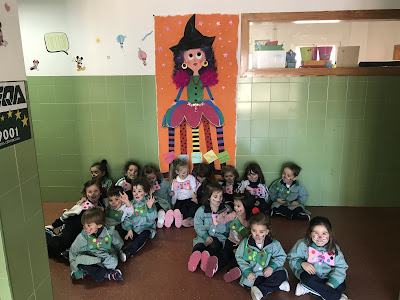The historical origin of the word Carnival is also obscure.It possibly has its roots in a primitive festival honouring the beginning of the new year and the rebirth of nature.The first day of Carnival varies with both national and local traditions.In Munich begins on the feast of the Epiphany, while in France before Ash Wednesday
Carnival involves wear masks and costumes allowing us to lose our everyday individuality and experience a sense of social unity.
Today it has become a tradition in which fancy dress and masks are the key to enjoying the party.We celebrate the Carnival ,this special moment, when we display all of our wit and humour participating with dances, costumes, parades, humorous songs, and artistic abilities fostering oral comprehension and expression skills and the ability to communicate in a foreign language using verbal and non verbal communication.
In pre primary education, we make our pet called "the patarrona" a big beauty girl with fours legs and she will be who tell us what to do and what to bring every day.
First day, monday: we make our mask and recite a poem.
Second day, tuesday:we make a beautiful bow tie.
Third day, wednesday:we make an animal mask with recyclable products.
On thursday:we make our musical instruments. For it we need a little plastic bottle, legumes, cellophane and some stickers. We are already prepared to make music with our maracas.
Finally, on friday: we dress up as one of our heroes of our favourite tale..."one of the three little pigs", "The Little Red Ridding Hood", "Peter Pan", "Snow White, "Pinocchio" "The Flinstones"... This day we sing our charanga and we march at the playground with our song.
We can appreciate the different activities made in different sessions throughout the week.
















No hay comentarios:
Publicar un comentario